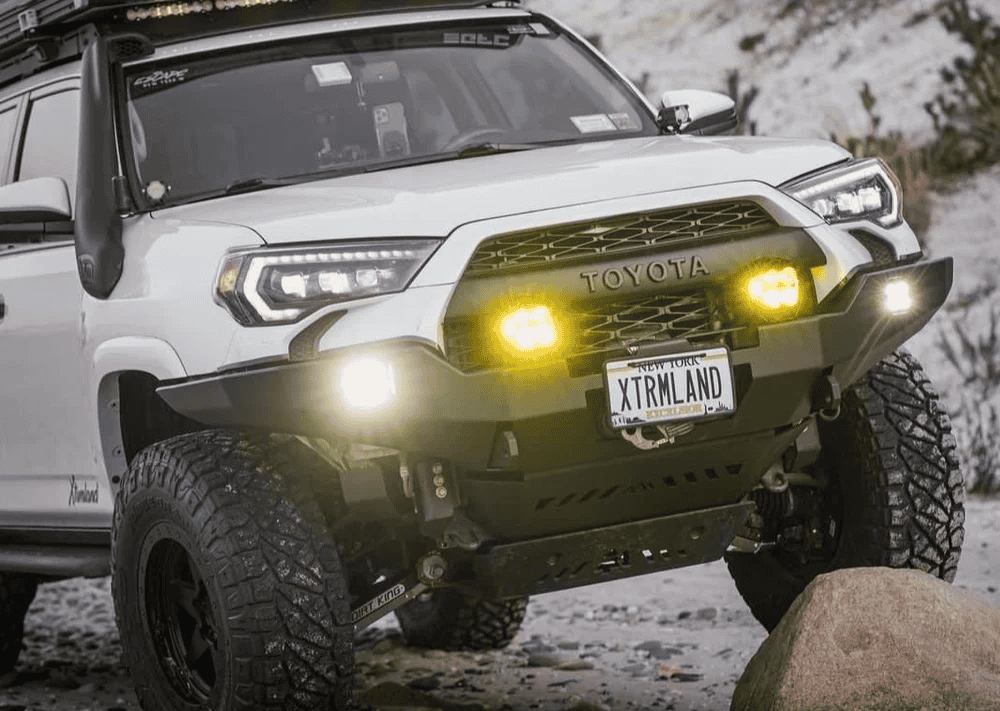Overland Vehicles

Selecting a heater begins with how you travel and how much hot water you actually use. Tankless units deliver endless hot water at a rated flow but require enough fuel or electrical power and stable inlet temperature. Compact tank models preheat a few gallons and can smooth out temperature swings while drawing less peak power. Propane and diesel heaters provide strong output for off grid living, while 120 volt electric units shine at shore power sites. Evaluate recovery time, altitude performance, and service access before mounting anything.
Real world sizing starts with flow. A typical van shower runs around 1.5 to 2.0 gallons per minute while a galley sink often stays under 1.0. If you prefer back to back showers, choose a unit with sufficient continuous output and confirm its rise at your expected inlet temperature. Cold mountain streams and winter conditions reduce effective flow, so plan conservatively. Also note that some tankless models need a minimum flow to fire which can affect low flow fixtures.
Propane offers high energy density and quick heat, but demands correct line sizing, regulators, and leak testing with an approved method. Diesel options integrate with auxiliary tanks and sip fuel, though they need clean power and periodic maintenance. Pure electric heaters are simple at campsites with shore power but can overwhelm small inverters and battery banks off grid. Hybrid strategies combine shore power with a fuel fired unit for redundancy.
Combustion appliances must vent outdoors and pull fresh air from outside or a sealed intake. Stainless flues routed with gentle bends and proper clearances protect interior finishes. Condensation can be significant in cool weather, so include a controlled makeup air path and prioritize sealed combustion where possible. Always place carbon monoxide sensors near sleeping areas and test them monthly.
Compact spaces reward tidy plumbing with serviceable components. PEX tubing paired with quality fittings resists vibration and freeze damage better than rigid pipe. An accumulator smooths pump pulses, quiets operation, and helps tankless units maintain ignition. A mixing valve set around 120 Fahrenheit reduces scald risk while allowing the heater to run hotter for better efficiency. Add isolation valves at the heater, pump, and filters so you can service parts without draining the whole system.
Plan a drain strategy from day one. Low point drains and quick disconnects speed winterization and repairs. If space allows, an expansion tank protects against thermal rise in closed systems and reduces nuisance relief valve drips. Use food grade hoses on the cold side and maintain neat line routing to avoid kinks, abrasion, and heat sources.
Match your pump flow to the heater’s preferred range and confirm pressure limits for every component. Many systems run comfortably around 40 to 55 psi. A two stage filter setup keeps debris out of check valves and solenoids, improving heater life and temperature stability. If you camp in areas with hard water, plan for descaling access or a softening approach to protect heat exchangers.
Safety starts with the pressure relief valve. Verify the valve rating, ensure the discharge line points to a safe location, and test operation on a regular interval. Electrical safety means correct wire gauge, overcurrent protection near the power source, and sound grounding practices. For fuel systems, pressure test lines, secure tanks with approved mounts, and keep shutoff valves reachable. Install temperature limiters at fixtures for kids and late night showers.
Routine upkeep keeps performance steady. Descale heat exchangers based on water hardness and usage patterns. Inspect anode rods in storage type heaters to prevent tank corrosion. Clean intake screens, check exhaust terminations, and reverify combustion clearances at least once a season. In freezing climates, drain or heat trace exposed runs, and consider a recirculation loop with a timed control to prevent cold starts while conserving energy.
A thoughtful installation also considers noise, access, and future upgrades. Rubber isolators under pumps, gentle tubing arcs, and clear service panels reduce rattles and field service time. Label valves and circuits so any owner can understand the system quickly. Keep a log of temperatures, pressures, and maintenance dates to catch trends before they become problems.
When your build includes hot water for showers, dishes, and gear cleanup, the system becomes a daily convenience you stop thinking about because it just works. That is the goal of a complete plan: a heater sized for your travel style, plumbing that resists vibration and cold, and safety devices that protect both people and the rig.
OZK Customs installs integrated hot water systems as part of complete van and truck builds. If your travel plans include backcountry nights and long trail days, explore our overland rigs to see how we design for real world use. For bespoke layouts, fabrication, and system engineering, our custom overland upfit page outlines how we turn requirements into reliable hardware. New to OZK and curious about our approach, craftsmanship, and client experience, start with why choose OZK Customs.
You bring the routes and the timeframe, we bring proven system design that delivers steady temperature, safe operation, and simple maintenance. Our team in Fayetteville Arkansas builds and tests your setup so that the first shower at pickup feels like home. Tell us how you camp, what you cook, and how many people ride along, and we will spec the right heater, power, and plumbing to match your adventures.
Ready for dependable hot water on every trip? OZK Customs designs and installs complete hot water systems as part of full van and overland builds. Tell us how you travel, and we will engineer the right heater, plumbing, and controls for your rig. Submit the form to start your build plan.
ADDRESS:
6159 E Huntsville Rd, Fayetteville, AR 72701
PHONE:
(479) 326-9200
EMAIL:
info@ozkvans.com